At an unassuming looking booth at Sea Otter there was some mega science going down. You’ll have to take my word for it, but the hollow rod of this Nitinol could be bent – and it would instantly get warm on the bend – and then it would return to straight again, whereupon it would instantly cool. Bonkers. Like seeing a magic trick. But there’s more to it than novelty heat generation – Smart Tires thinks its properties could make for airless tyres. Whether this does indeed become a technology of the future, or not, may depend on if some big tyres company sees it and sees potential. Certainly, Earl from Smart Tires is a believer, and did his best to explain to me what this wonder product was all about.
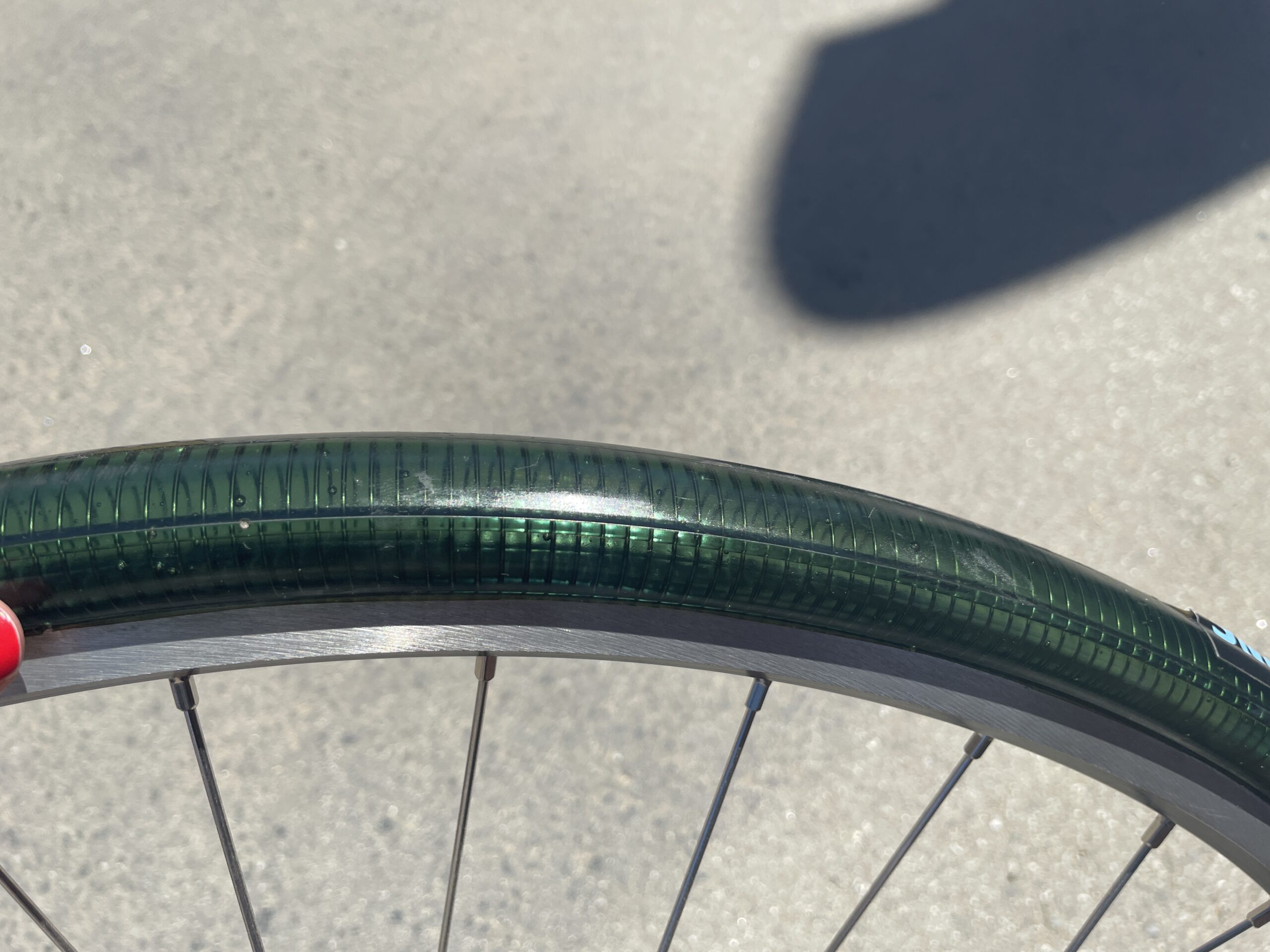
Okay, you have here what looks to me like some kind of witchcraft. For the readers it’s a titanium tube that I can bend and it gets warm and then it goes back to shape and it gets cold. What the heck is going on? Can you explain it?
Well, that particular tube that you have that sample with is not what we’re going to be using for bicycles. It’s just a sample of the material. The material is called Nitinol, which is a shape memory alloy. It’s a combination of titanium and nickel. So, Nickel-titanium makes Nitinol. And when you put those two together, you get these magical properties. So it has a high energy return. It will always remember its shape no matter how you bend it. It’s originally from the Mars Rover program with NASA. They’re going to use it on the tyres there. And temperature won’t affect it here on Earth. You can get the hottest of hot, coldest of cold, the PSI will stay the same. It’s a wonderful thing. It’s never been used for tyres before.
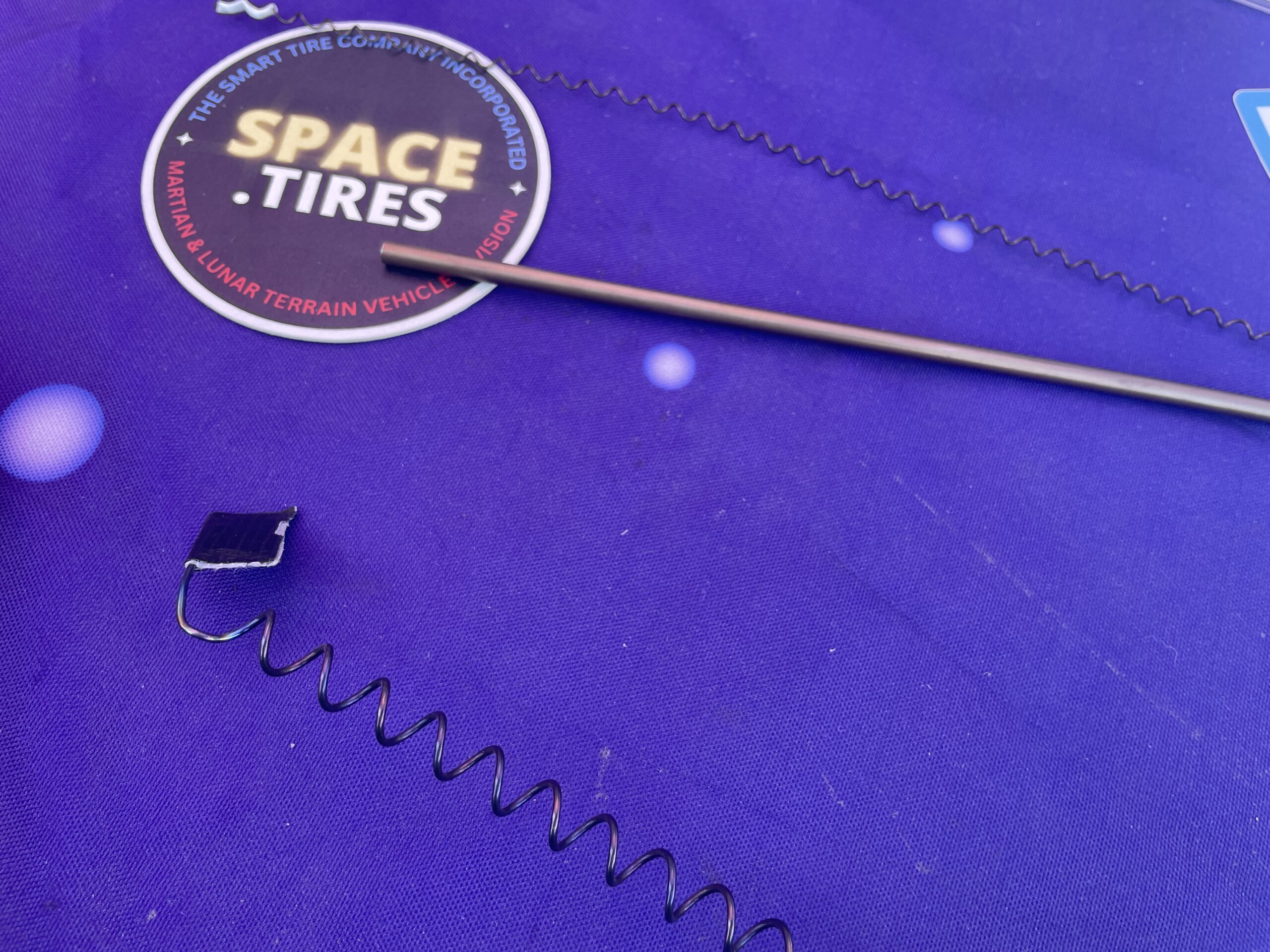
Okay… Can you explain in terms that I might understand what’s going on with the molecules or anything like that? If it’s shape returning, how do you make it into a spring?
Latest Singletrack Merch
Buying and wearing our sustainable merch is another great way to support Singletrack
Yeah, well the difference between this material and if this was made out of steel, you bend steel to deform it, it’s permanently deformed. Or aluminium, or you stretch it – those molecules are actually stretching apart, and that’s why it would be deformed. The difference with this material is the molecule is actually rearranged, to however you stretch it. So if you look at it in a tyre, it will actually rearrange over an object as opposed to your stretching. So it’s a very mind-boggling thing that happens and it’s called Martensite and Austenite. Some crazy chemistry terms! But only this material can do that.
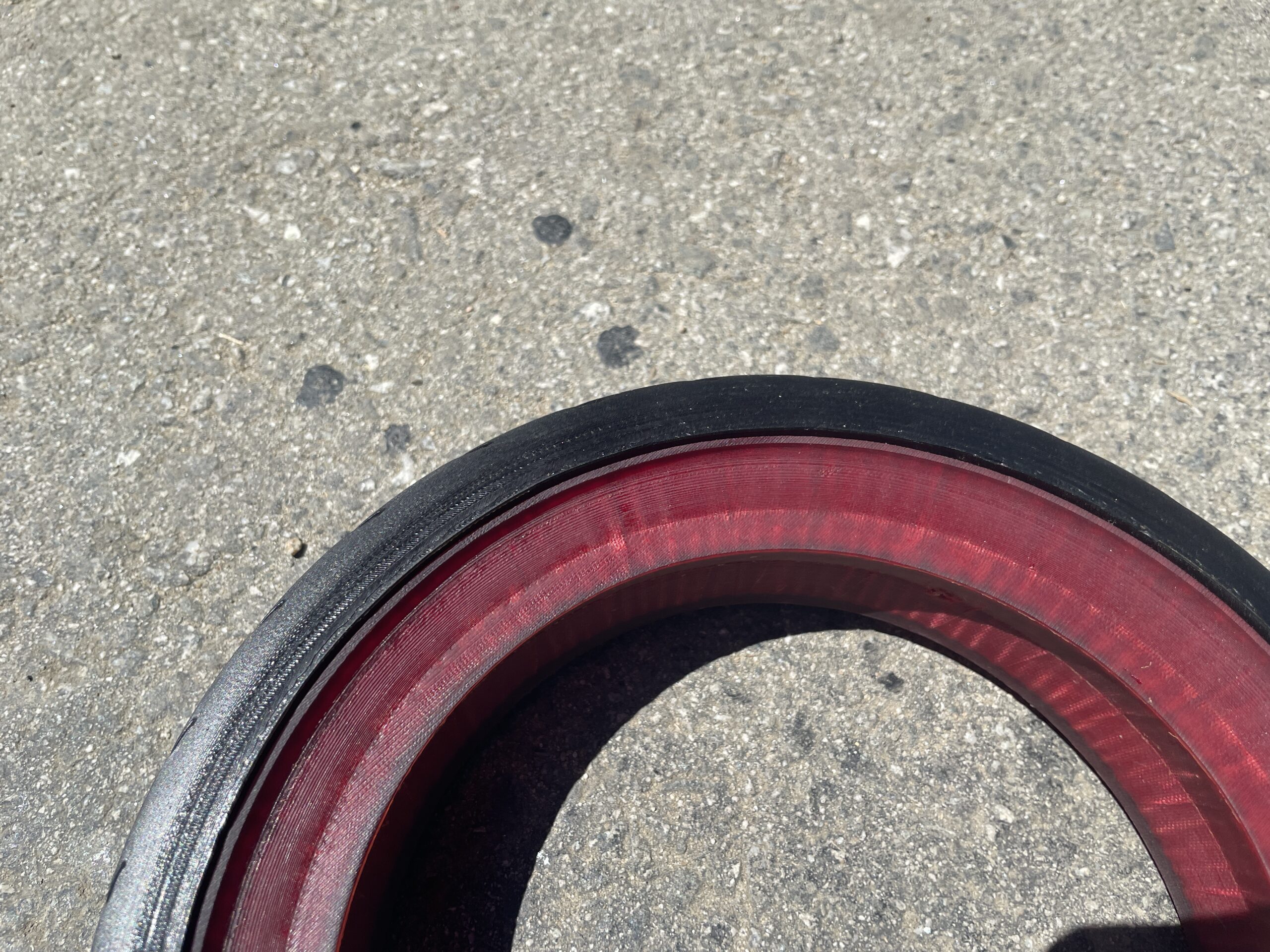
It’s pretty wild… yeah. Okay, so you have taken what looks like a spring, I guess, and then wrapped it in what to make those tyres?
This is a polymer here, like a polyurethane and then on top of that we will have the rubber tread for grip on the road. So we’re able to use polyurethane because sidewalls aren’t needed for this because there’s no air pressure so the structural element is actually the shape memory alloy, the Nitinol. So that we put it in a spring shape because it’s just easier to make it that shape, so no air pressure, you can roll over nails, rocks, glass, it would never get a flat. It’s nothing like a Run Flat. It’s not solid, it’s hollow inside, and it matches the PSI of any other tyre that you want. And it feels just like a normal air-filled tyre.
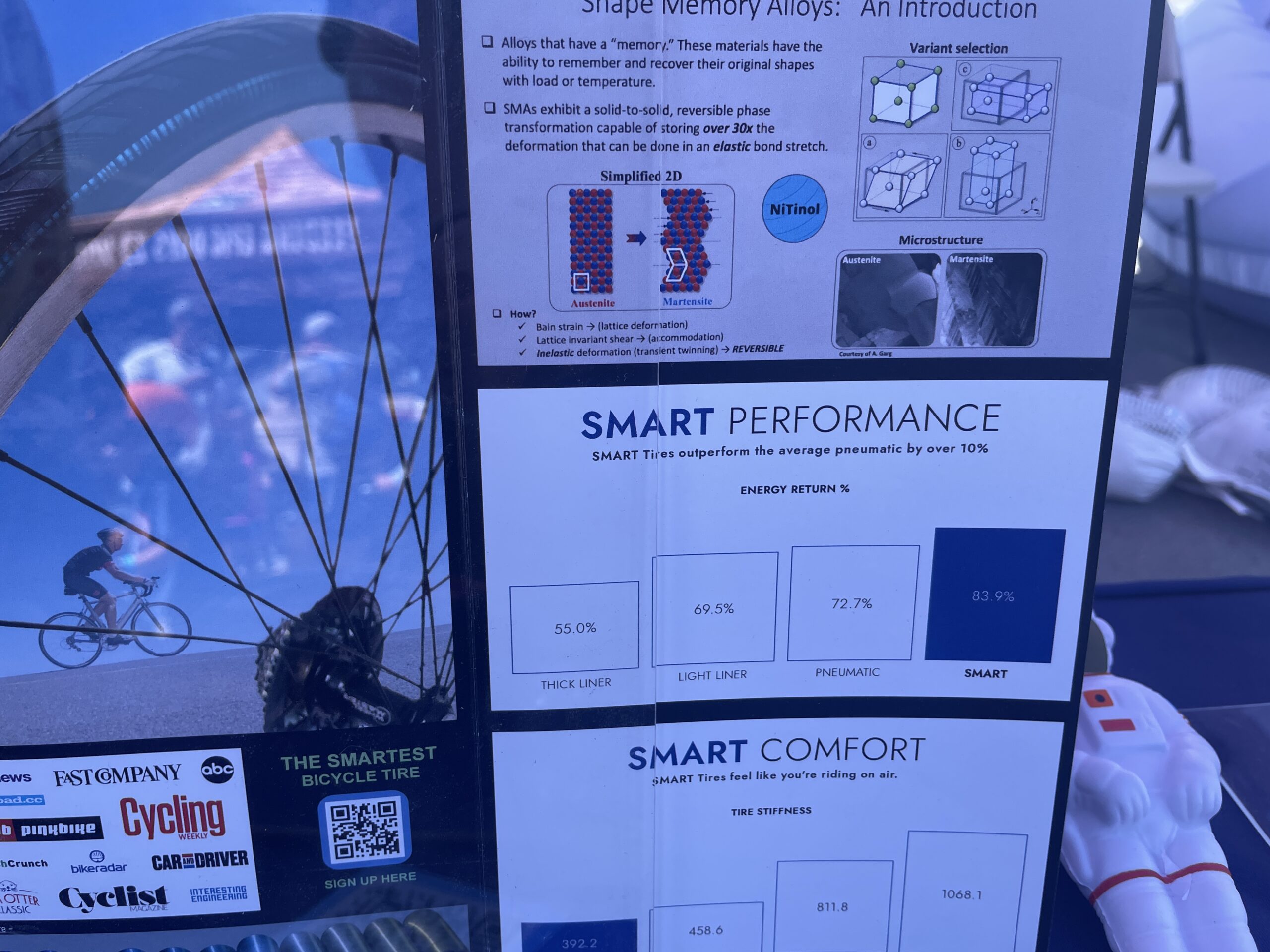
So does it deform? Like, you can take a tyre and lower the pressure for more grip in different conditions? How or what would you do to replicate that?
With this, at this point we can’t change the PSI however you want it. It’s like you can buy it at a certain PSI and it would stay that way.
Right, so you choose your spring, kind of like you choose your spring on your suspension?
We can formulate it into any type of stress.
Okay, so that tyre that you’ve got there is quite hard.
This is more like an 80. Yeah, it’s kind of 80 PSI.
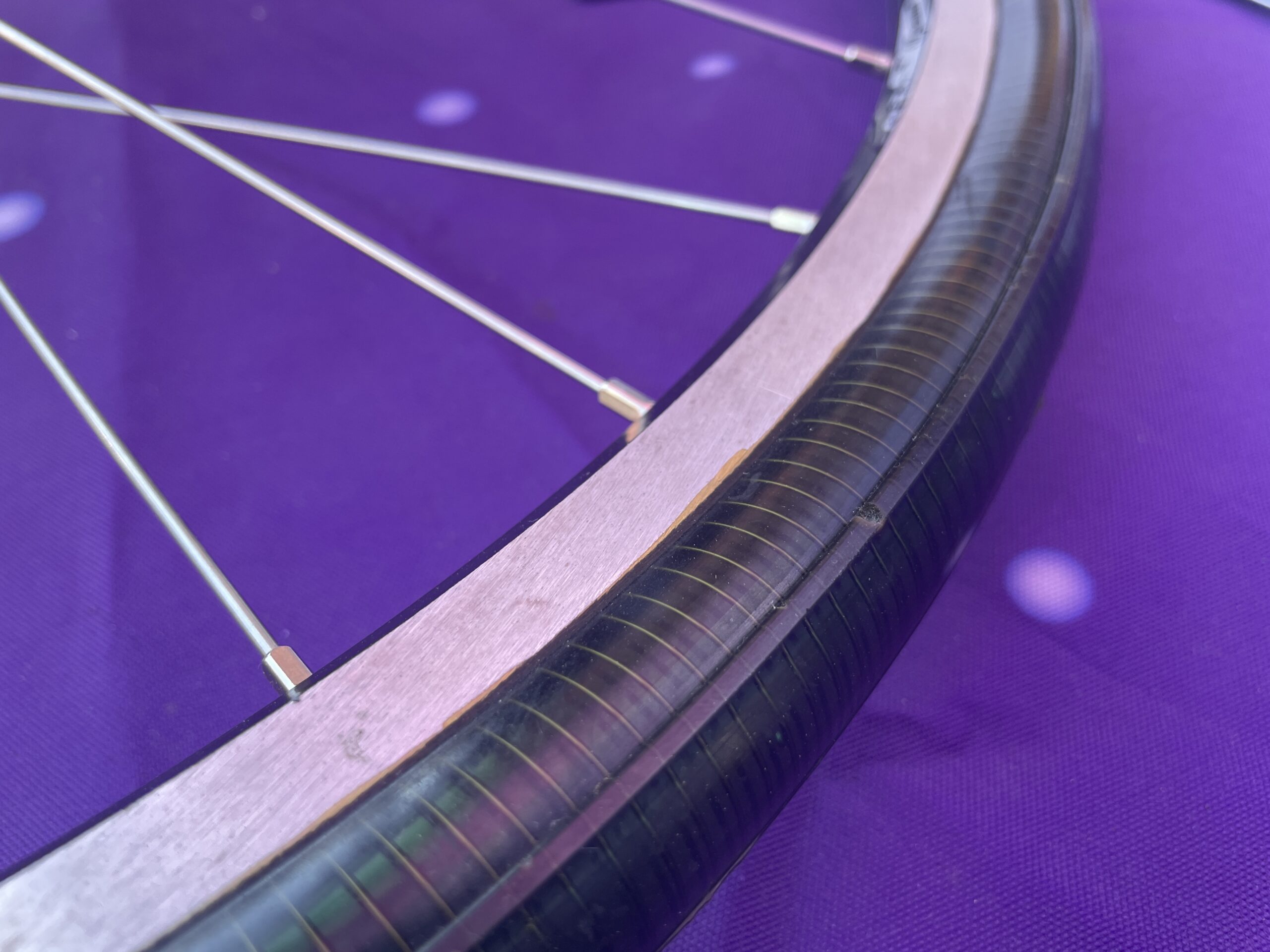
Right, but you could make one of these springy things and make it like a 20 PSI tyre?
Yes, yes, exactly.
And then you would put whatever coating you want in order to create grip or shape or tread?
Yeah, it’s going to be the first retreadable bicycle tyre. So when a tread wears out, because the tyre itself will not, you put on another tread. Here’s an example here is a scooter tyre. So you see has this skin on top of it. This will last a life of your vehicle. So when the tread wears out like a bicycle instead of throwing out the whole tyre, you just replace this one. That’s it.
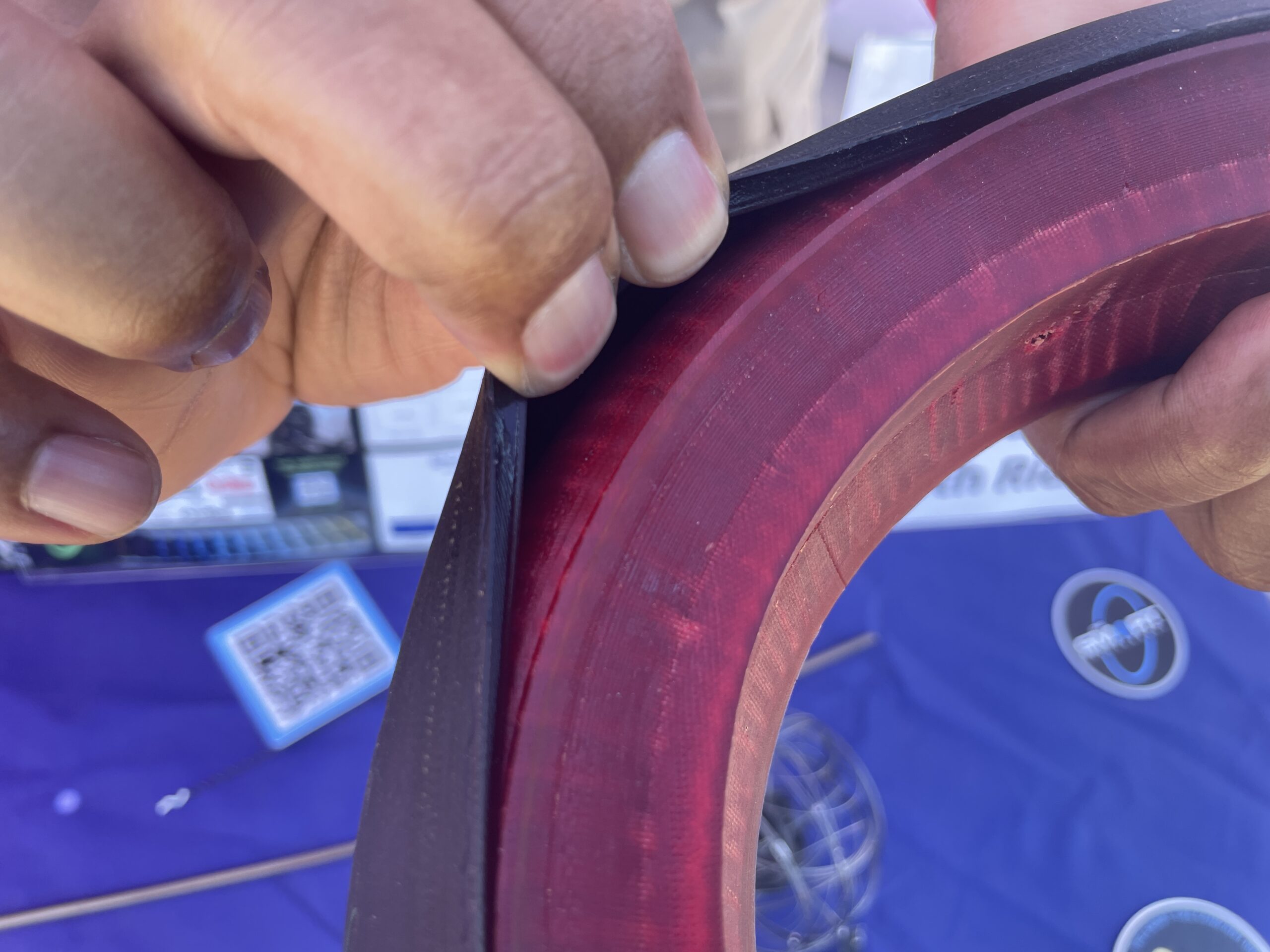
So you could have your 20 PSI inner and then you could have a slick outer for going on gravel tread and then you could have a knobbly outer too?
If you like, yup! There’s never been any tyre system like that before, but we’re able to do that because of the power of Nitinol.
Nitinol. Okay. I’m still boggled, but I’m now also boggled by the possibilities. So, yeah, I kind of look forward to seeing where this ends up. SUper interesting!
It will end up everywhere. It will end up on all bicycles, scooters, cars. We’re already working on stuff for aerospace and the moon. So this is going to be the future.
Right. So it’s good enough for the moon?
Yes. If it’s good enough for the moon and Mars, it should be good enough for your bicycle.
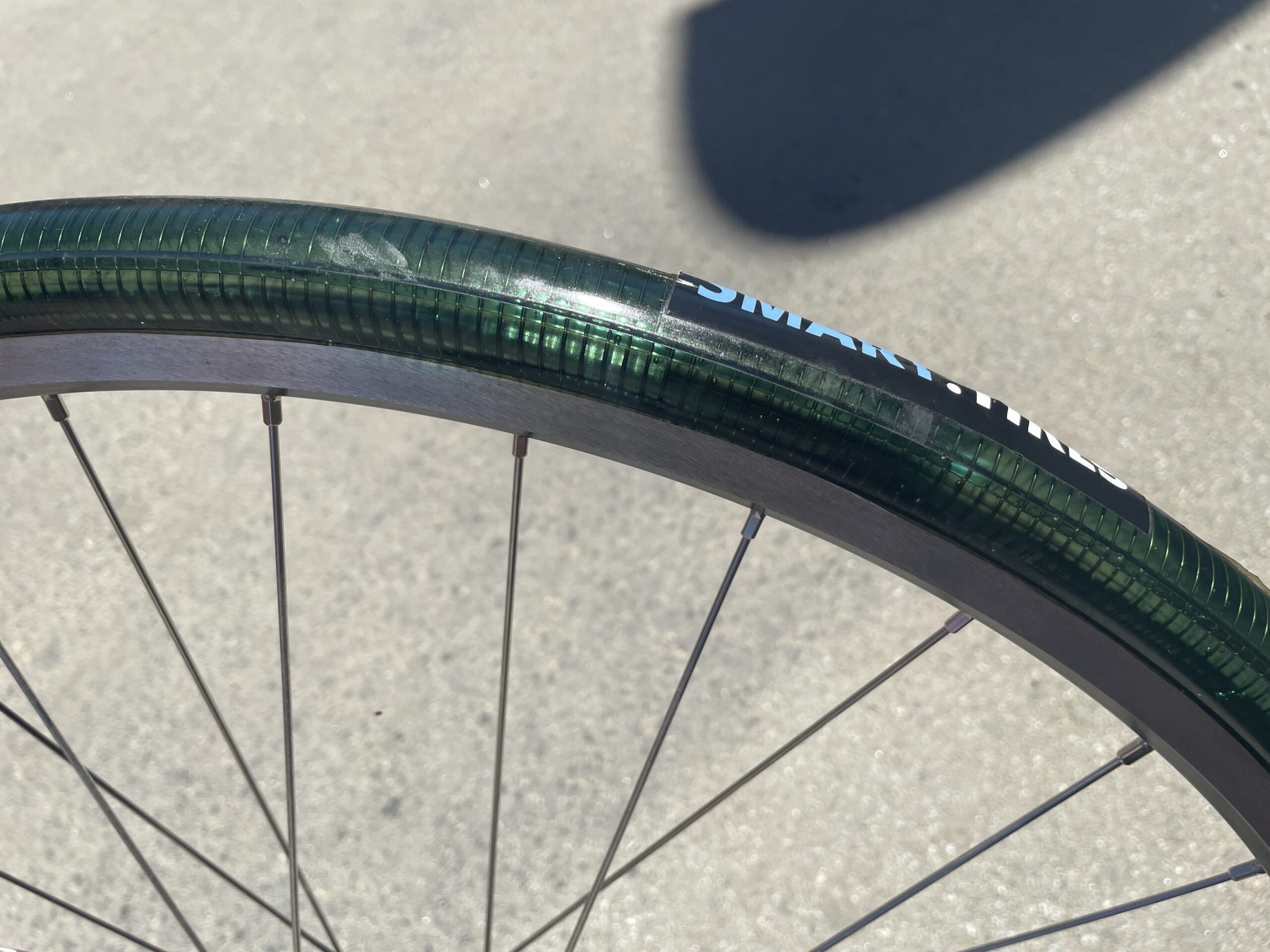
I think we know that rubber is kind of an endangered plant. They’ve got trouble with the rubber supply and tyre manufacturers are looking at alternatives like how to make rubber with less rubber plant compound in them, and there’s also the recycling element and reusability element. So yeah, this seems like it could be the beginning of something quite exciting.
It is!
Right, well watch this space folks. Thank you very much Earl!
You’re very welcome.




